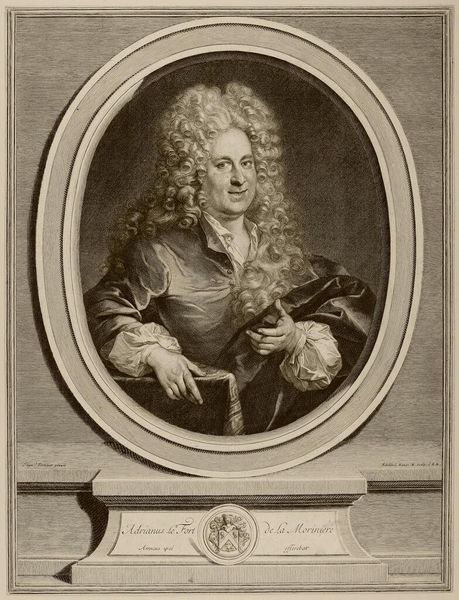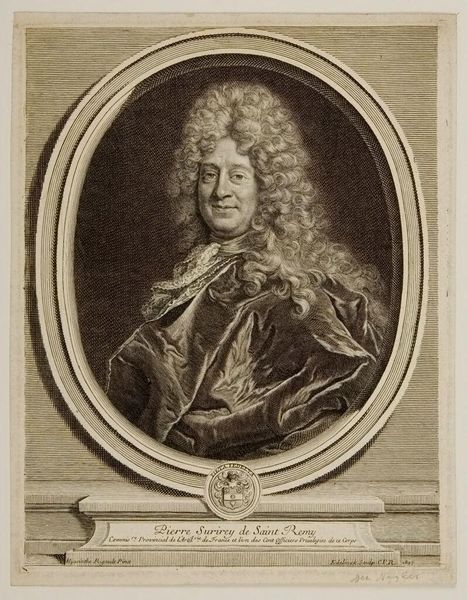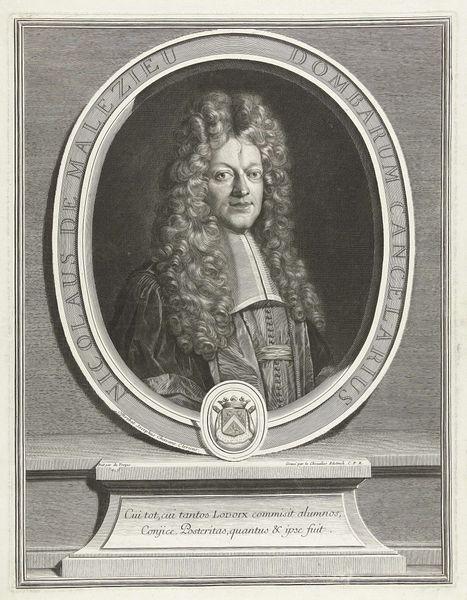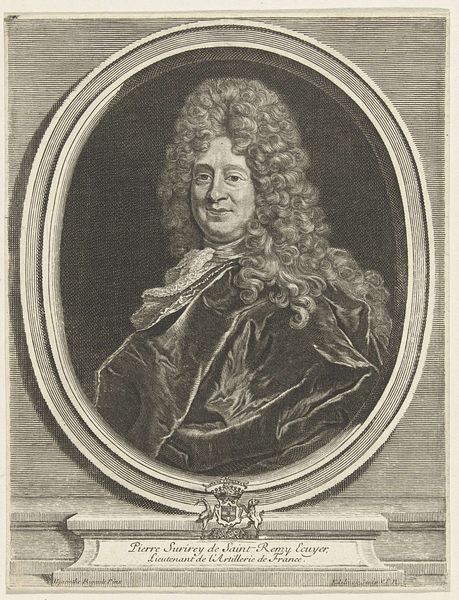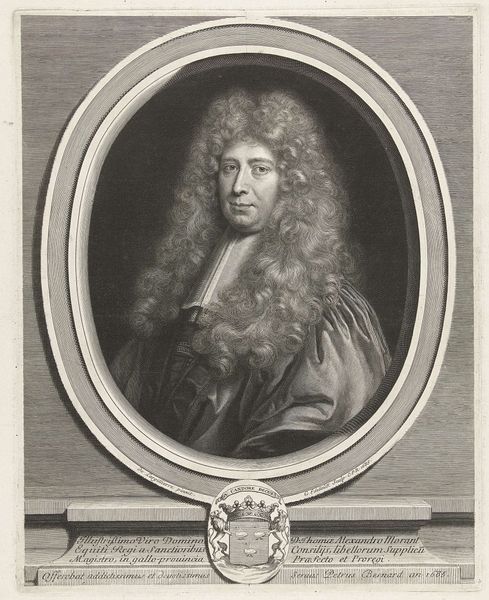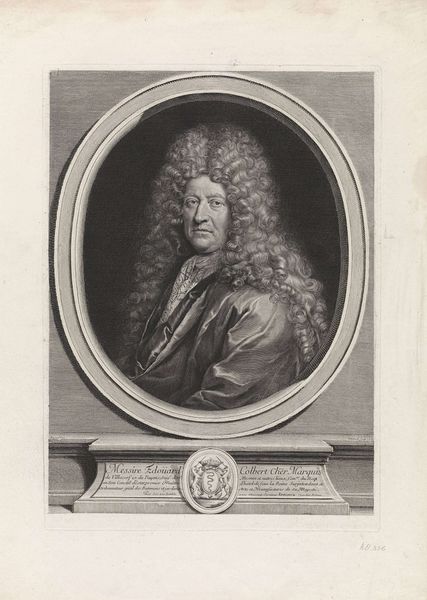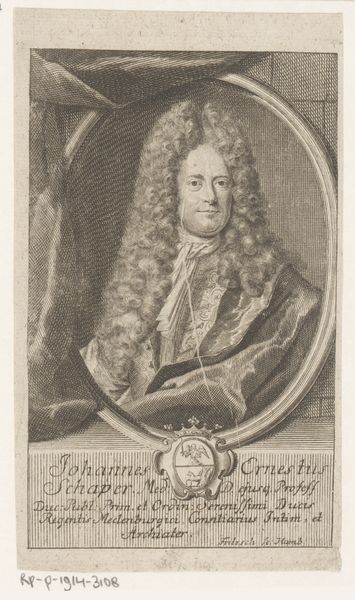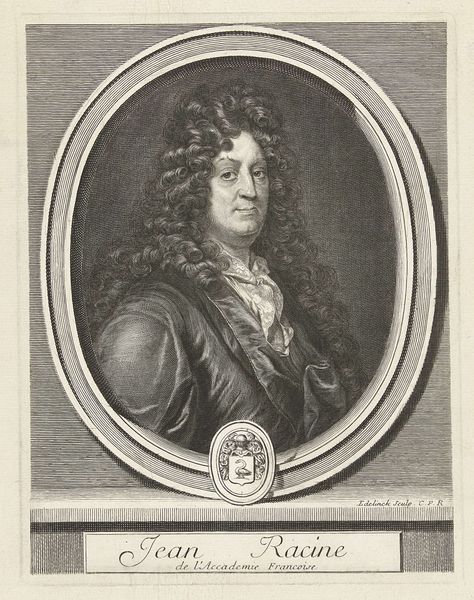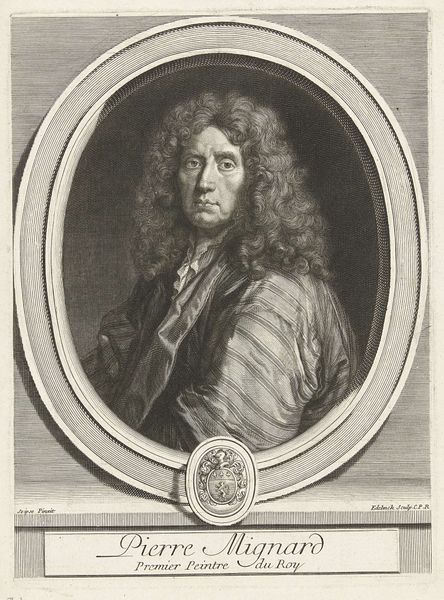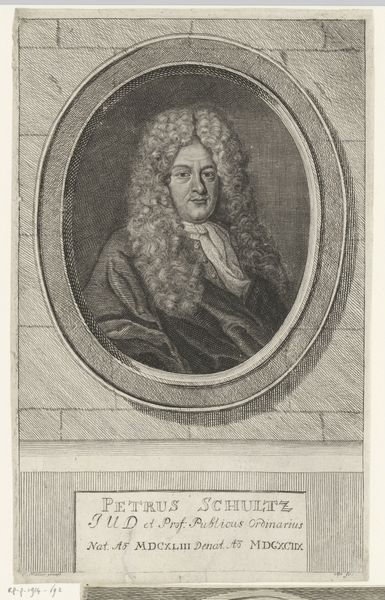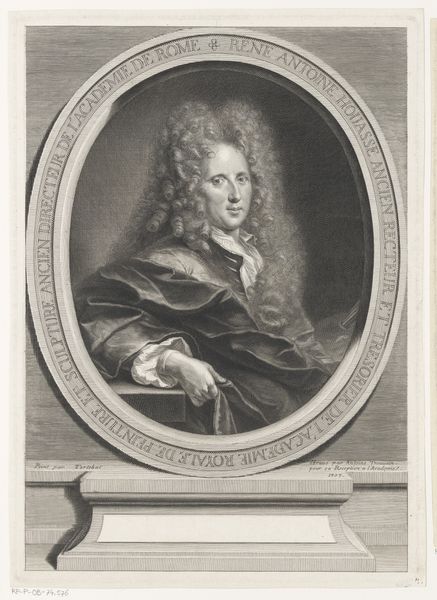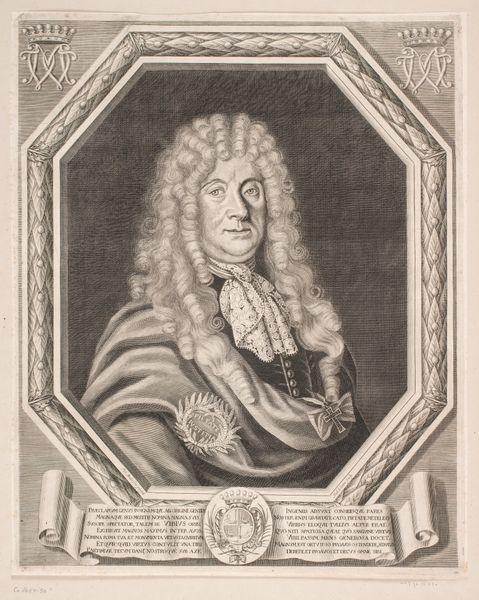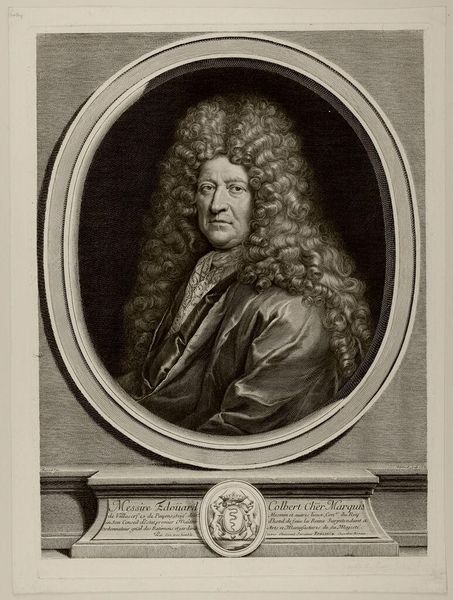
engraving
#
portrait
#
baroque
#
old engraving style
#
line
#
engraving
Dimensions: height 434 mm, width 336 mm
Copyright: Rijks Museum: Open Domain
Curator: Before us, we have Gérard Edelinck’s engraving, "Portret van Adrien Lefort de la Morinière," completed sometime between 1666 and 1707. It resides here at the Rijksmuseum. Editor: My initial impression is that we’re presented with a rather confident individual, encapsulated within what looks to be a classical portrait setting, yet his posture and the gleam in his eyes feel playful, perhaps even subtly subversive. Curator: Yes, the composition is intriguing. Notice the crisp lines achieved through meticulous engraving, and the tonal gradations defining his features. The oval frame, seemingly embedded in a rectangular block, provides a contained space that allows for intense scrutiny of form and texture. Observe, in particular, the masterful detail rendered in the rendering of the voluminous wig! Editor: It’s hard to ignore that wig. While I admire the artistry, I'm equally struck by what it signifies in its socio-political context. The Baroque era valued opulence, and fashion played a crucial role in signaling social standing. Who was Adrien Lefort, and what did this ostentatious display communicate to his contemporaries? Was Edelinck complicit in glorifying power, or offering subtle critique? Curator: I would point to the objective mastery on display through Edelinck's engraving process to say that you read too much into this based solely on societal factors. His hand, demonstrated with sharp burin, moves and breathes based solely on proportion and form, giving life to an era. Notice how, within such rigid structure, we can still feel his breath of being, what truly enlivens the Baroque period! Editor: His pose and direct gaze evoke something deeper than merely capturing his physical likeness; rather, Lefort projects agency. To ignore these elements would do both Lefort and Edelinck's practices a disservice. He’s holding something small in his right hand – perhaps it offers further clues as to his status and profession? And might that gesture also serve as an invitation? Curator: What the portrait represents is quite different from what is at play through material representation, itself. And there's the pleasure, isn’t it, in engaging so personally with such skillful handling of line, and the artist’s commitment to mimetic accuracy and beauty in pure aesthetic form. Editor: Indeed. It also reveals that there is something about encountering the gaze and form in relation to class and culture. We engage as a way to explore social performance throughout periods, inviting contemporary understanding.
Comments
No comments
Be the first to comment and join the conversation on the ultimate creative platform.
